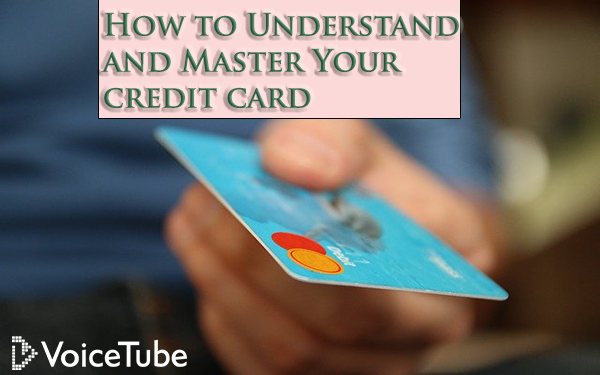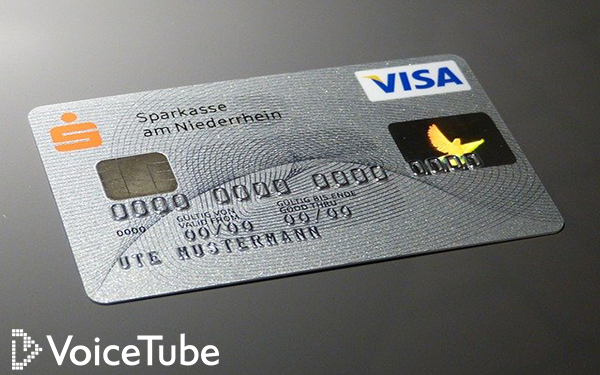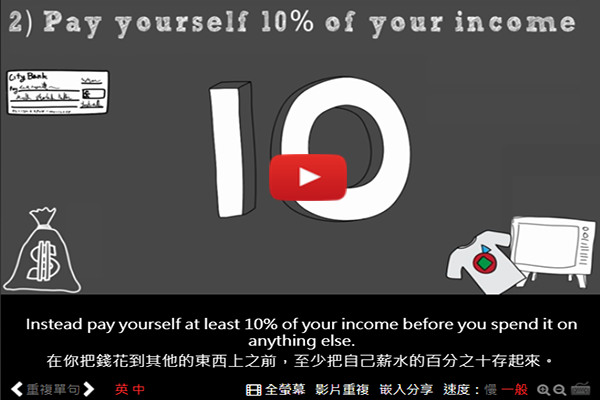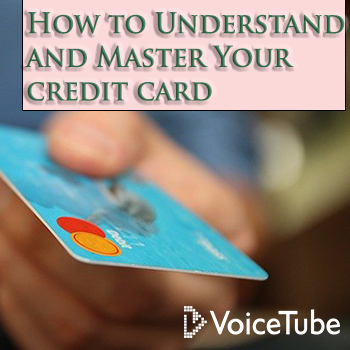Afraid of credit cards?
Credit cards can actually help you
Learn key phrases that will help you understand and master your credit card

Introduction
Just saying the word “credit card” often elicits a sense of panic and fear in some people. They imagine a life of debt and stress… and rightfully so in some cases. However, credit cards are a necessary part of modern life, and everyone will likely own one at some point in their lives. Instead of being afraid of credit cards, it’s better to understand them, that way you can choose the right card, be smart about using it, and avoid getting into a bunch of debt.
If you live in an English-speaking country, it will be useful to understand credit card terminology. Here is what you need to know to master your credit card.
Credit limit
A credit limit is simply how much money you can “borrow” on your credit card. For instance, your credit limit might be $8,000 (USD). This means that you can spend $8,000 and put it on this card without a problem (but make sure you can pay off whatever you spend).
Higher limits are obviously better, and even if you have a higher credit limit, you don’t need to spend that much. For instance, I have never put more than $500 on my card despite having an $8,000 credit limit.
Annual fee
Some credit cards will have an annual fee. Annual means yearly (once a year) and a fee is something that you need to pay. So, there will be a fee just to own this card, even if you don’t use it. Cards with the best rewards often have annual fees, so an annual fee is not necessarily a bad thing.
Not every card has an annual fee. Some are free to use, like mine, but some people might benefit from an annual fee if they can get good enough rewards from their credit card or use it for business trips and so on.
Balance
Balance is simply the money you spend and put on your credit card. If you buy a new $40 shirt using your credit card, then the balance will be $40. If you buy a Nintendo Switch for $300, then you will have a credit card balance of $300.
In short, the balance is the money that you borrowed on the credit card and still owe.
Interest rate
Every credit card has an interest rate. This is going to be a percentage. Credit cards tend to have pretty punishing interest rates, especially if you don’t have a good credit score or haven’t had your credit card for a long time. It isn’t rare for an interest rate to be as high as 15% – 25%.
This interest rate will only matter if you don’t pay off your credit card in full. If you buy something today and pay off that balance before that payment is due, you won’t get charged interest. However, if you leave a balance on your card, you will have to pay this interest rate, so try to pay off whatever you purchase on your credit card before the due date arrives. One thing to note is that interest rates and annual percentage rate (APR) can be a bit different.

Minimum monthly payment
You will have a minimum payment due if you use your credit card. This can be a little deceiving, though, since you still pay interest even if you pay the minimum. Let’s say you spend $1,000 on your credit card. The minimum payment may only be $50. This means that you will still have to pay interest on the remaining $950 even after paying the minimum balance. Keep this in mind and try to always leave a balance of $0 on your credit card.
Balance transfer
Hopefully, this isn’t a word you will have to worry about, but you should understand what it means. If you have a high balance on a card with a high interest rate, you may want to transfer the balance to a new credit card with a lower interest rate.
Many people will opt to put a high balance on a card that has a grace period, which is a period of time where you don’t owe any interest on the balance on your card. There may be a few other reasons to transfer a balance, but most people do it to get a lower interest rate and to avoid amassing more debt.
Fixed rate / variable rate
Interest rates can be complicated. It’s not always the same rate forever. If it were, that would be a fixed rate. For example, if your interest rate is 10.9% for the entire duration of a loan or the whole time that you have your credit card, then that is a fixed rate.
If you have a variable interest rate, then that interest rate will change. Chances are that the interest rate will go up after a certain amount of time. This benefits the lender–in this case, the credit card company. If you are taking out a loan, this is very important to pay attention to. With a credit card, it can still be important; but if you pay off your credit card in full every month, then the interest rate won’t matter.
Rewards
Many credit cards offer rewards. Some offer flight miles, money back, and so on. Every credit card is slightly different, so you should research which rewards you want the most and what you will be spending your credit card on the most.
Rewards are given back either as a percentage or as a certain number of flight miles. For example, I get 2% back on purchases from grocery stores, which is a nice incentive to put the monthly groceries on the credit card. My old credit card used to give me “X” number of flight miles for all my purchases.
HOW TO SAVE MONEY FAST – 5 TIPS FOR SAVING MONEY

Conclusion
Understanding credit cards will make them a lot less scary. It is important to choose a credit card that fits your lifestyle and spending habits. You may need to contemplate credit card rewards and an annual fee or what the interest rate on the card is.
As long as you are smart, a credit card can be a nice option to have in your wallet. It can even reap some nice rewards for purchases that would otherwise bring you nothing in return.
Photos
money-card-business-credit-card by jarmoluk
cheque-guarantee-card-credit-card by falco
